On April 28th at 5:30 pm we departed French Cay for a downwind, overnight sail to Acklins Island in the Bahamas. The high ESE winds we had experienced anchored at French Cay, TCI had abated by departure, and continued to lessen overnight, so this was a slower passage.
Why depart at 5:30 pm, just a couple of hours before dark, you ask? Departure times are not impulse decisions: passage planning is quite simple and only requires knowing how far you want to go and how fast or slow you expect to go to get there. Daylight arrivals are preferred – especially for unfamiliar destinations – so it's simple arithmetic to calculate estimated passage time and backing up from your preferred arrival time to get the required departure time.
The hard part is predicting the weather and how fast or slow the boat will perform in differing wind strengths and directions. In remote areas we get our weather information via SSB radio – either voice or text downloads – and make boat speed predictions on our past experience. We usually "aim" to arrive at a destination within a few hours either side of mid-day which is quite easy for short to moderate distances. As passage lengths increase, transit times are less and less predictable due to weather variables. For multi-day passages we depart at advantageous times and start finessing boat speed as needed during the final 24 hours in order to achieve daylight arrivals. It’s usually easier to slow down than speed up, which is preferable to arriving too early and having to stand off a destination waiting for daylight.
On the way to Acklins a noteworthy event occurred around midnight on Dave’s watch. Our AIS (automatic identification system) revealed a distant ship on a collision course with us. This is a routine occurrence on passage and collisions are exactly what AIS is intended to help prevent. The AIS shows the location, name, course, and speed of the ship on our chart plotter – often before visual contact can be made. AIS also calculates the CPA – closest point of approach-- and TCPA – time to closest point of approach-- so determining whether a collision potential exists is very easy to do when only one ship is involved. (In heavily trafficked areas multiple, moving AIS “targets” will be displayed and the chart plotter resembles a video game – but with real consequences.)
Normally for us, when AIS indicates a potential collision, we attempt to contact the “target” via radio to make sure they similarly see us on their AIS and to determine if they intend any near term course or speed changes. Then we usually make avoidance maneuvers or course changes as needed to keep clear. However, we may not get any radio response and, even when we do make contact, ships are reluctant to change course or speed for a “little boat”. More typically, to be in control our own safety, we make the necessary maneuvers. But on this occasion, just as Dave was preparing to hail the ship on the radio, it changed course to pass astern of us, eliminating the collision potential. We appreciated the courtesy and love our AIS.
For this passage winds were 10-15 kts from the ESE and SE, less than expected, resulting in a slower than expected passage. We arrived at an anchorage near Salina Point, Acklins Island at 4:14 pm on April 29th. On our approach we were met by a large pod of dolphins that played about us. We anchored in some nice, deep, soft sand near some isolated coral heads. No anchoring compromises here—ah, to be back in the Bahamas with all of its wonderful deep sand beneath us! Again, no other boats anywhere, but also again, no fish on the crossing.
We enjoyed this anchorage for a couple days while waiting for a shift in the weather before continuing on through the Bahamas. Each day we snorkeled the patch reefs that were all within swimming distance from the stern of the boat and could best be described as “teeming with fish”—delightful!
Overnight Passage to the Bahamas
Sunday, May 01, 2011
 Salina Point, Acklins and Crooked Islands, Bahamas
Salina Point, Acklins and Crooked Islands, Bahamas
Other Entries
-
149A Shore Thing – St Vincent to St Lucia
Jan 2992 days prior Marigot Bay, Saint Luciaphoto_camera3videocam 0comment 0
Marigot Bay, Saint Luciaphoto_camera3videocam 0comment 0 -
150St Lucia to Dominica
Jan 3091 days prior Portsmouth, Dominicaphoto_camera1videocam 0comment 0
Portsmouth, Dominicaphoto_camera1videocam 0comment 0 -
151The Sounds of Parrots Squawking
Feb 0189 days prior Portsmouth, Dominicaphoto_camera2videocam 0comment 0
Portsmouth, Dominicaphoto_camera2videocam 0comment 0 -
152Onward to Guadeloupe and Antigua
Feb 0486 days prior English Harbour, Antigua and Barbudaphoto_camera15videocam 0comment 0
English Harbour, Antigua and Barbudaphoto_camera15videocam 0comment 0 -
153Could anyplace be more gorgeous than Barbuda?
Feb 1179 days prior Codrington, Antigua and Barbudaphoto_camera16videocam 1comment 0
Codrington, Antigua and Barbudaphoto_camera16videocam 1comment 0 -
154St. Barth’s
Feb 1377 days priorGustaviaphoto_camera5videocam 0comment 0 -
155Two for the high price of one – Sint Maarten
Feb 1575 days prior Simpson Bay, Saint Martinphoto_camera5videocam 0comment 0
Simpson Bay, Saint Martinphoto_camera5videocam 0comment 0 -
156Twice Around the Island – The Big Race
Feb 2268 days prior Simpson Bay, Saint Martinphoto_camera10videocam 0comment 0
Simpson Bay, Saint Martinphoto_camera10videocam 0comment 0 -
157The Morning After the Night Before
Feb 2763 days prior Simpson Bay, Saint Martinphoto_camera4videocam 0comment 0
Simpson Bay, Saint Martinphoto_camera4videocam 0comment 0 -
158Next stop – Virgin Gorda, BVI
Feb 2862 days prior North Sound, Virgin Islands Britishphoto_camera18videocam 0comment 0
North Sound, Virgin Islands Britishphoto_camera18videocam 0comment 0 -
159Touring BVI with Wally and Larry
Mar 0359 days prior Anegada, Virgin Islands Britishphoto_camera31videocam 0comment 0
Anegada, Virgin Islands Britishphoto_camera31videocam 0comment 0 -
160Return to North Gorda Sound
Mar 0656 days prior Trellis Bay, Virgin Islands Britishphoto_camera1videocam 0comment 0
Trellis Bay, Virgin Islands Britishphoto_camera1videocam 0comment 0 -
161It Ain’t All Rum and Mangoes
Mar 2240 days prior Soper's Hole, Virgin Islands USphoto_camera1videocam 0comment 0
Soper's Hole, Virgin Islands USphoto_camera1videocam 0comment 0 -
162National Park Highlights on St John, USVI
Mar 2339 days prior Caneel Bay, Virgin Islands USphoto_camera1videocam 0comment 0
Caneel Bay, Virgin Islands USphoto_camera1videocam 0comment 0 -
163The Definition of Cruising
Apr 0328 days prior Charlotte Amalie, Virgin Islands USphoto_camera1videocam 0comment 0
Charlotte Amalie, Virgin Islands USphoto_camera1videocam 0comment 0 -
164Another Group of Virgins
Apr 238 days prior Cayo de Luis Pena, Puerto Ricophoto_camera20videocam 1comment 0
Cayo de Luis Pena, Puerto Ricophoto_camera20videocam 1comment 0 -
165Passage to the Turks and Caicos Islands
Apr 274 days prior French Cay, Turks and Caicosphoto_camera12videocam 1comment 0
French Cay, Turks and Caicosphoto_camera12videocam 1comment 0 -
166Overnight Passage to the Bahamas
May 01 Salina Point, Bahamasphoto_camera8videocam 2comment 0
Salina Point, Bahamasphoto_camera8videocam 2comment 0 -
167Passage Through the Jumentos and Hog Cay Cut
May 054 days later Hog Cay Cut, Bahamasphoto_camera5videocam 0comment 0
Hog Cay Cut, Bahamasphoto_camera5videocam 0comment 0 -
168Transiting from the Exuma Sound to the Exuma Bank
May 098 days later Highborne Cay, Bahamasphoto_camera17videocam 2comment 0
Highborne Cay, Bahamasphoto_camera17videocam 2comment 0 -
169Northward to the Berry Islands
May 1615 days later Great Harbour Cay, Bahamasphoto_camera7videocam 0comment 0
Great Harbour Cay, Bahamasphoto_camera7videocam 0comment 0 -
170To Sail or Not to Sail
May 2322 days later Palm Beach, United Statesphoto_camera3videocam 0comment 0
Palm Beach, United Statesphoto_camera3videocam 0comment 0 -
171Homeward Bound
May 3029 days later Willoughby Harbor Marina, United Statesphoto_camera8videocam 0comment 0
Willoughby Harbor Marina, United Statesphoto_camera8videocam 0comment 0 -
172Hobie Fleet 32 Day Sail
Jul 0363 days later Willoughby Harbor Marina, United Statesphoto_camera11videocam 0comment 0
Willoughby Harbor Marina, United Statesphoto_camera11videocam 0comment 0 -
1732011 Summer Maintenance
Nov 01184 days later Reedville, United Statesphoto_camera10videocam 0comment 0
Reedville, United Statesphoto_camera10videocam 0comment 0 -
174Preparations for 2011 Passage to Eastern Caribbean
Nov 10193 days later Reedville, United Statesphoto_camera4videocam 0comment 0
Reedville, United Statesphoto_camera4videocam 0comment 0 -
175First 3 Days of Passage Norfolk to Virgin Islands
Nov 13196 days later Somewhere in the Atlantic Ocean, Internationalphoto_camera8videocam 2comment 0
Somewhere in the Atlantic Ocean, Internationalphoto_camera8videocam 2comment 0 -
176Mild Conditions and the Mid-Ocean Swim -Days 4 + 5
Nov 15198 days later Somewhere In The Atlantic Ocean, Internationalphoto_camera11videocam 1comment 0
Somewhere In The Atlantic Ocean, Internationalphoto_camera11videocam 1comment 0 -
177Our Progress Speeds Up – Days 6 and 7
Nov 17200 days later Somewhere in Atlantic Ocean, Internationalphoto_camera1videocam 0comment 0
Somewhere in Atlantic Ocean, Internationalphoto_camera1videocam 0comment 0 -
178Targeting a Daylight Arrival –The Final Days
Nov 19202 days later Soper's Hole, Virgin Islands USphoto_camera12videocam 0comment 0
Soper's Hole, Virgin Islands USphoto_camera12videocam 0comment 0 -
179Destination U.S. Virgin Islands with Wally and Bob
Nov 23206 days later Charlotte Amalie, Virgin Islands USphoto_camera17videocam 0comment 0
Charlotte Amalie, Virgin Islands USphoto_camera17videocam 0comment 0 -
180Settling Into Another Season in Paradise
Dec 03216 days later St Croix, Virgin Islands USphoto_camera25videocam 1comment 0
St Croix, Virgin Islands USphoto_camera25videocam 1comment 0 -
181Our Return to the Spanish Virgin Islands
Dec 14227 days later Culebra, Puerto Ricophoto_camera26videocam 1comment 0
Culebra, Puerto Ricophoto_camera26videocam 1comment 0 -
182Eastward Bound
Dec 18231 days later Charlotte Amalie, Virgin Islands USphoto_camera1videocam 0comment 0
Charlotte Amalie, Virgin Islands USphoto_camera1videocam 0comment 0 -
183Seeking New Destinations in the BVI
Dec 19232 days later Soper's Hole, Virgin Islands USphoto_camera0videocam 0comment 0
Soper's Hole, Virgin Islands USphoto_camera0videocam 0comment 0 -
184Exploring the Islands of Sir Francis Drake Channel
Dec 26239 days later Buck Island, Virgin Islands Britishphoto_camera15videocam 0comment 0
Buck Island, Virgin Islands Britishphoto_camera15videocam 0comment 0

 Salina Point, Acklins and Crooked Islands, Bahamas
Salina Point, Acklins and Crooked Islands, Bahamas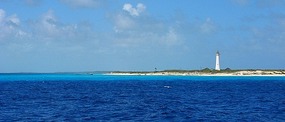
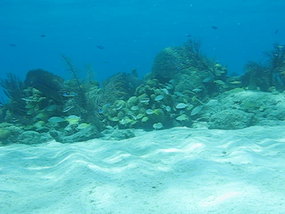











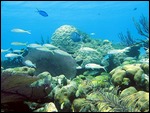
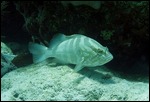
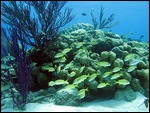

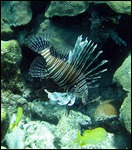
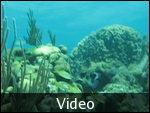
2025-05-23